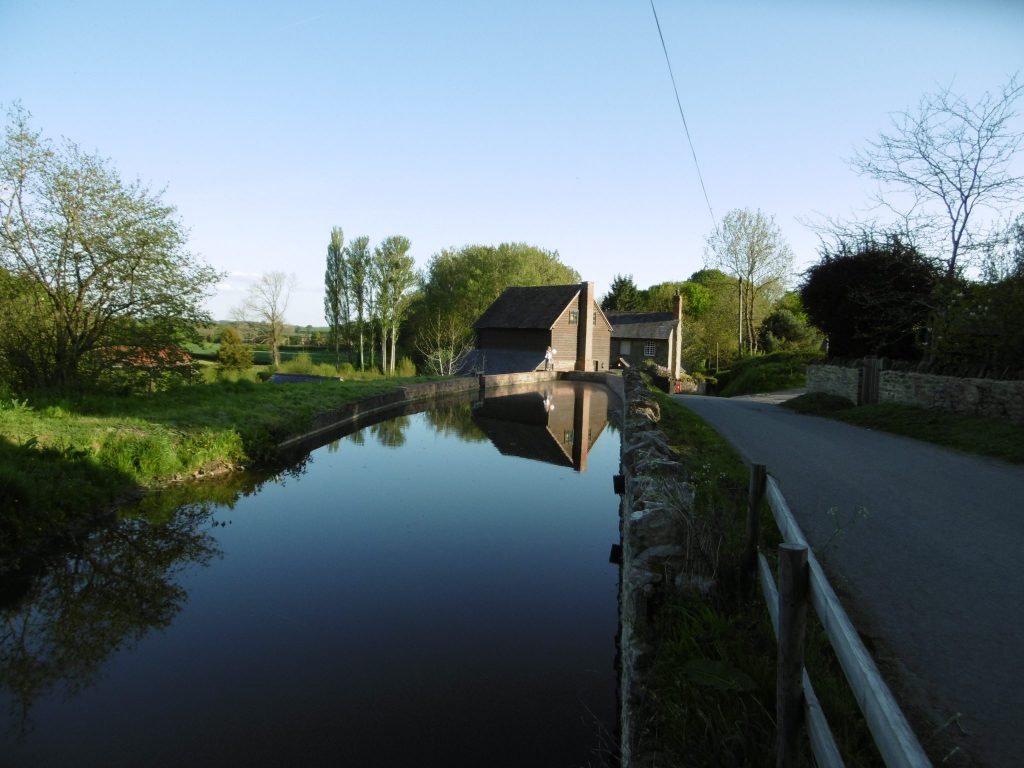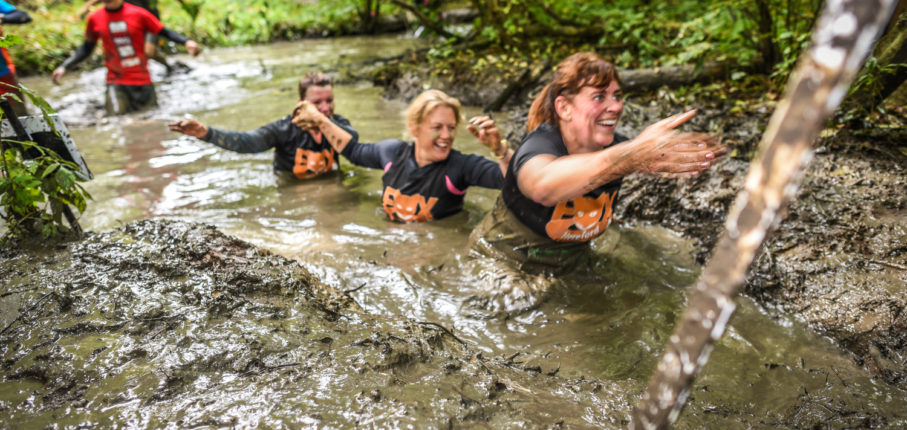
This weekend, the Society for the Protection of Ancient Buildings-Watermills Section holds its annual open weekend for wind and watermills, and we are opening Clencher’s Mill in Eastnor from 10.30am until 12.30pm. Thanks to the support of the SPAB and to funding through Natural England under the Higher Level Stewardship scheme, we have been able to reconnect the old mill machinery and restore the waterwheel ; we expect to be able to test run the mill on Saturday morning, though not to grind flour.
We have more work to do. The mill pond walls have deteriorated in large areas since the water was cut off in the 1920s after a dispute between the miller and farmer where the water was diverted into the leat, but we anticipate a little more grant funding towards their repair. In due course, we would like to lift the mill stones and inspect and recut them as necessary, but that will involve quite a bit of work as Herefordshire mills were not provided with stone hoists. We aim to open the mill when we can and especially to encourage visits by schools. We would like to grind wheat and make flour.
A note by the SPAB (Alan Stoyel) is set out below:
Eastnor has had its watermill since at least the late 13th century, but it was in the 18th century that Clencher’s Mill was rebuilt in its present form. A weather-boarded timber-framed structure on a brick and stone base, it is typical of many local farm buildings. The combination of overgrown former millpond beside the road, pig-sties in the yard behind, and pieces of millstone built into the front wall is evidence of it being a water-powered corn mill. The tall chimney on the building was purely for serving fireplaces on two floors – dispelling the frequently-held misconception that traditional corn mills were in constant danger of explosions from flour dust!
When the mill was constructed it was built in a conventional way, typical of the period, with two pairs of millstones on the first floor, driven from below, by wooden machinery. The massive upright shaft was continued above the stones, to power any other machines required. This, with the crown-wheel at the top, driving the wooden lay-shaft and pinion, is contemporaneous with the building and, together, these constitute an important survival. There would have been belt-driven connections to a sack-hoist in the loft and, formerly, a flour dresser to remove the bran from the ground meal to produce white flour.
The present waterwheel is 16 feet in diameter, larger than usual for Herefordshire. It carries the date of 1820, which makes it the earliest dated example in the county. The wheel is overshot, and was mounted on a wooden shaft originally. The iron machinery driven by the wheel is a replacement from the last quarter of the 19th century. At the same time, or shortly thereafter, the present iron waterwheel-shaft replaced a massive wooden one, and a new sack-hoist was installed in the loft. Following all these improvements it was a relatively short time before flour production ended – during the First World War. The mill then produced only animal feed, and working by water power ceased in the 1920s. It was probably at this time that one of the pairs of stones was removed. About 40 years later use of the mill finally came to an end – by which time it had been powered by a tractor via shafting from the next door building where a cider press and apple scratter were also housed. The water to the mill had been cut off when the miller had a dispute with the upstream tenant at Goldhill farm, a Mr Browning.
The postcode is HR8 1RR. Parking will be in the field below the mill, reached via the gate just before the ford on the western side. Clencher’s Mill is Listed Grade II.
We look forward to seeing visitors from 10.30am on Saturday 11th May.
JH-B 8th May 2013

D3 Active organised a second Mud Runner event around Eastnor last weekend. It is firmly placed on the running calendar, though there was no participation from my family members! The sun was shining but it didn’t affect the seriously muddy conditions on the tracks. The 10km off-road run across the estate uses many of the driving tracks that Land Rover use to test their vehicles on, all of which provide a tough and challenging run as well as a generous amount of thick deep mud and large troughs of muddy water!
The atmosphere of the race was, as always, high spirited, sociable and fun. There was double the number of entries this year, with over 1000 runners, as the event grows in popularity due to its distinctly challenging and challenging terrain! The organisers this year also built a giant steam bath (full of bubbles!) for the racers to de-mud themselves and warm up. It was greatly appreciated by many and added the camaraderie and uniqueness of the event.
All the feedback so far has been very positive with runners finding it very demanding, gruelling, tough on the legs but immense fun.
Second place Matt James said “The organisation of Mud Runner is what sets it apart and the atmosphere is brilliant. It feels like you’re getting a three-course meal not the normal two courses!”
Second female runner, Elsa Knoertzer said “Concentrating on which part of the mud pit to step into and how not to swallow too much mud in the process made me forget the pain, as did the sense of comradeship amongst competitors.”
The next two Mud Runner events at Eastnor in the series are:
Icebreaker – Winter Duathlon – February 6th 2011
Mud Runner Oblivion – May 8th 2011
See you then. JH-B 22nd October 2010
One of the farmers at Eastnor has reintroduced pigs onto the farm. Until 1939, most of the farms and cottages here had pigsties. Whereas farms would have had quite a few pigs grunting away in brick-built accommodation, there would only be one or two pigs at the back of a cottage, but they performed a useful function consuming food left-overs, potato peelings, excess apple crops etc so that the sort of food waste that today gets recycled or simply buried in the landfill was avoided. It was an efficient and thrifty approach.
Simon & Sophie Blandford have decided to bring the pigs back. They have plenty of space at Netherton Farm, and the pigs seem pretty content. As they are woodland animals, they like the freedom to wander amongst the trees and grub about in the shade. We haven’t quite organised the waste food from our catering to go to them yet, but that is the next logical stage.
In the meantime, we are able to offer our guests home-grown bacon and sausages, in the old fashioned way. Herefordshire is proud of its food and drink and we are delighted to be able to offer the real thing to our visitors too. Come and try them! J H-B 26/3